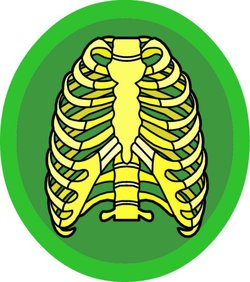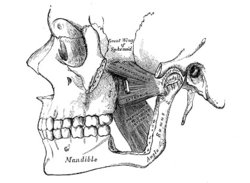Skeleton
|
|
In biology, the skeleton or skeletal system is the biological system providing support in living organisms.
Skeletal systems are commonly divided into three types - external (an exoskeleton), internal (an endoskeleton), and fluid based (a hydrostatic skeleton), though hydrostatic skeletal systems may be classified separately from the other two since they lack hardened support structures.
Large external skeletal systems support proportionally less weight than endoskeletons of the same size, and thus many larger animals, such as the vertebrates, have internal skeletal systems. Examples of exoskeletons are found in arthropods, shellfish, and some insects: the skeleton forms a hard shell-like covering protecting the internal organs.
The phyla arthropoda and mollusca both have exoskeletons. Since exoskeletons necessarily limit growth, phyla with exoskeletons have come up with various solutions. Most molluscs have calcareous shells and as they grow, the diameter of the shell is enlarged without altering its shape. On the other hand, arthropods shed their exoskeletons to grow, a process known as molting (or ecdysis). During molting the arthropod breaks down their old exoskeleton and then regenerates a new one which they then harden through various processes (such as calcification or sclerotization).
An internal skeletal system consists of rigid structures within the body, moved by the muscular system. If the structures are mineralized or ossified, as they are in humans and other mammals, they are referred to as bones. Cartilage is another common component of skeletal systems, supporting and supplementing the skeleton. The human ear and nose are shaped by cartilage. Some organisms have a skeleton consisting entirely of cartilage and without any calcified bones at all, for example sharks. The bones or other rigid structures are connected by ligaments and connected to the muscular system via tendons.
Hydrostatic skeletons are similar to a water-filled balloon. Located internally in cnidarians and annelids, among others, these animals can move by contracting the muscles surrounding the fluid-filled pouch, creating pressure within the pouch that causes movement. Animals such as earthworms use their hydrostatic skeletons to change their body shape as they move forward from long and skinny to short and stumpy.
Clip Art and Pictures
- Anatomy Clipart (https://classroomclipart.com/image/category/anatomy-clipart.htm)
- Anatomy Pictures and Illustrations (https://classroomclipart.com/image/category/anatomy-illustrations.htm)
See also


